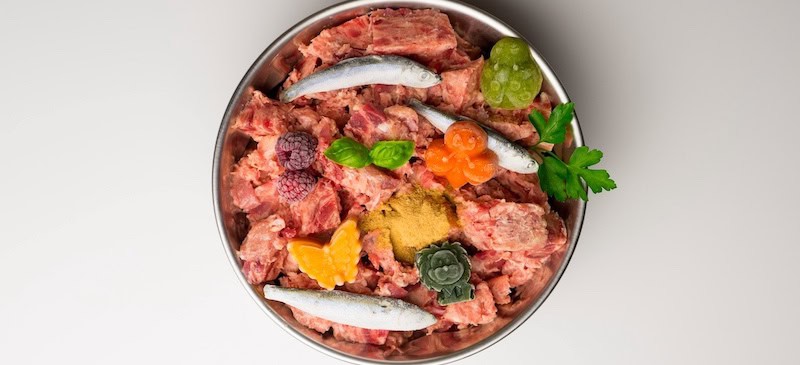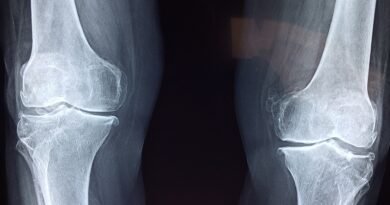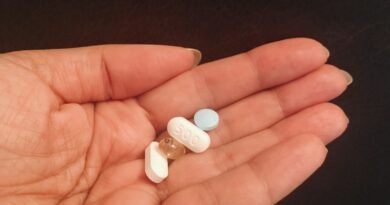Should You Try an Animal-Based Diet? Pros, Cons & Everything in Between

The animal-based diet is gaining attention as a dietary approach focused primarily on consuming animal products.
Advocates suggest it can lead to better health, improved energy levels and fewer digestive issues. However, with any diet, it’s important to weigh the benefits and risks to decide if it’s right for you.
This article will explore what an animal-based diet is, how it differs from the carnivore diet, how to follow it, its potential benefits and its downsides so you can make an informed decision.
What is an animal-based diet?
An animal-based diet emphasizes the consumption of animal-derived products, such as meat, organs, fish, eggs and dairy. It allows for a limited intake of plant foods, particularly those low in antinutrients like fruits, honey and some vegetables considered to be low in plant toxins.
This approach contrasts with more plant-heavy or plant-exclusive diets, as animal foods form the majority of calories and nutrients consumed.
The diet is centered around nutrient-dense, bioavailable sources of protein and fat. In particular, it prioritizes well-raised meat sources (grass-fed and pasture-raised/free-range) and prefers raw and unpasteurized dairy.
Proponents argue that the animal-based diet aligns more closely with ancestral eating patterns, and some claim it can address modern health problems, like metabolic disorders and gut issues.
The goal is to maximize nutrient intake from animal sources while minimizing potential inflammatory compounds found in some plant foods.
Animal-based vs. carnivore diet
The animal-based diet is often confused with the carnivore diet, but there are key differences:
- Animal-based diet: Includes mostly animal products but allows some plant-based foods, especially non-toxic ones, such as low-fructose fruits, honey and certain vegetables.
- Carnivore diet: A stricter version, this diet typically eliminates all plant foods and consists exclusively of meat, fish, eggs and other animal products.
While the carnivore diet focuses solely on animal sources, an animal-based diet is more flexible, offering a wider range of nutrients by incorporating some plant foods. This flexibility can make the animal-based diet easier to maintain over time.
Here’s more on how an animal-based diet differs from a carnivore diet in several key aspects:
- Food variety: The carnivore diet strictly limits intake to animal products only, excluding all plant foods. In contrast, an animal-based diet allows for some plant foods, particularly fruits and certain vegetables.
- Carbohydrate intake: A carnivore diet is essentially a zero-carb approach, while an animal-based diet may include some carbohydrates from fruits and honey.
- Flexibility: An animal-based diet offers more flexibility and a wider range of food choices compared to the more restrictive carnivore diet.
How to follow
Following an animal-based diet involves understanding which foods are central to this eating pattern and which should be avoided or limited.
Foods to eat:
- Meat: Grass-fed beef, lamb, pork, chicken, turkey and game meats.
- Fish and seafood: Wild-caught fish like salmon, sardines and mackerel.
- Eggs: Free-range, organic eggs are encouraged.
- Dairy: Full-fat, unprocessed dairy products, such as cheese, butter and yogurt (for those who tolerate dairy).
- Fats: Animal fats like tallow, lard and ghee.
- Organ meats: Liver, heart, kidney and other nutrient-rich organ meats.
- Fruits: Low-antinutrient fruits like berries, bananas and avocado.
- Honey: In moderation, as a natural source of carbohydrates.
- Vegetables: Those considered low in plant toxins can be included.
Foods to avoid:
- Grains and legumes: Wheat, rice, oats, lentils and beans.
- Nuts and seeds
- Refined sugar and ultra-processed foods: Candy, baked goods and packaged snacks.
- Vegetable oils: Industrial oils like canola, soybean and sunflower oil.
- High-antinutrient vegetables: Vegetables high in antinutrients, such as spinach, kale and legumes, are often discouraged or limited.
- Highly processed plant foods: Soy-based products, artificial sweeteners and heavily processed vegan foods.
There is no specific way to follow the diet, but typically foods are categorized as either having a low, medium or high toxicity. An animal-based diet consists mostly of low-toxicity foods and some medium-toxicity foods and avoids highly toxic foods.
Low-toxicity foods:
- animal proteins from ruminant animals (cows, deer, sheep, goats, wild game) and organ meats
- free-range or corn- and soy-free eggs
- dairy, particularly raw dairy products, such as cheese, yogurt, kefir, cottage cheese, sour cream and whipping cream
- most fruits
- fats like butter, tallow, ghee, suet and lard
- natural sweeteners like raw honey, maple syrup and agave
- herbs and spices like salt, rosemary, basil, cilantro and thyme
- drinks like water, fresh fruit juice, bone broth and coconut water
Medium-toxicity foods:
- animal proteins from monogastric animals (pork, poultry) typically fed corn and soy and wild-caught fish
- fruits with oxalates like rhubarb and starfruit
- vegetables and grains, such as sauerkraut, pickles, sweet potatoes, yams, carrots, white rice and sourdough bread
- fats like dark chocolate and avocado, olive, coconut and palm oils
- herbs and spices like oregano, dill, mint, parsley, cinnamon and coconut aminos
- beverages like coffee and tea
High-toxicity foods (avoid):
- highly processed oils, such as canola, corn, soybean, rapeseed, cottonseed, safflower, peanut, rice bran and soy oils
- vegetables like kale, broccoli, cauliflower, Brussels sprouts, cabbage, horseradish, radishes, watercress, bok choy, cassava, beets, onions and garlic
- grains like wheat, corn, oats, millet, quinoa, brown rice, millet and amaranth
- nuts, such as almonds, walnuts, cashews, macadamia and Brazil nuts
- Seeds like chia, flax, sunflower, pumpkin, quinoa, hemp and sesame seeds
- legumes, such as peas, green beans, soybeans, kidney beans, lentils and peanuts
- nightshades, including tomatoes, white potatoes, eggplants, peppers, goji berries
- artificial sweeteners, such as sucralose, aspartame, stevia and monk fruit
- herbs and spices like turmeric, pepper, cardamom, cumin and corianders
- ultra-processed foods, including soda, pastries, chips, pretzels, pizza, cereal and candies
Potential benefits
Proponents of the animal-based diet highlight several health benefits. Here are some potential advantages:
1. Nutrient density
Animal products are rich in essential nutrients, like B vitamins, iron, zinc, omega-3 fatty acids and complete proteins. These nutrients also are usually more bioavailable than those found in plant foods.
2. Improved digestion
Many people report fewer digestive issues, such as bloating and gas, as they reduce or eliminate high-fiber plant foods that can irritate the gut.
3. Stable blood sugar levels
A diet high in protein and healthy fats can help stabilize blood sugar, potentially aiding in the management of conditions like type 2 diabetes.
4. Better satiety
The high protein and fat content in animal-based foods can lead to greater satiety, reducing overall calorie intake and aiding in weight management.
5. Enhanced muscle growth and recovery
Due to its high protein content, an animal-based diet can support muscle growth, repair and recovery after exercise.
6. Reduced inflammation
Some people report a decrease in inflammatory symptoms, especially those associated with autoimmune conditions, after cutting out certain plant foods.
Downsides (risks and side effects)
While there are potential benefits, an animal-based diet is not without its downsides:
1. Nutrient deficiencies
Restricting plant foods may lead to deficiencies in certain vitamins, minerals and fiber. For instance, by limiting plant foods, you may miss out on essential nutrients like vitamin C and certain antioxidants found in fruits and vegetables.
2. Increased cholesterol levels
Animal products are high in saturated fat, which could raise cholesterol levels in some individuals, potentially increasing the risk of heart disease.
3. Digestive issues
Some people may struggle with digesting large amounts of animal fat and protein, leading to constipation or other digestive discomforts.
4. Sustainability concerns
Eating primarily animal products can have environmental impacts, as meat production requires more resources compared to plant-based foods. Animal-based diets generally have a higher environmental footprint compared to plant-based diets.
5. Cost
High-quality animal products, such as grass-fed meats and wild-caught fish, can be expensive, making this diet cost-prohibitive for some.
6. Social challenges
Following a restrictive diet can make social situations and dining out more difficult.
Should you try it?
Deciding whether to try an animal-based diet depends on various factors, including your health status, nutritional needs, personal dietary preferences, individual health goals and lifestyle.
Those looking to improve digestion, increase protein intake or reduce processed foods might benefit from this diet. However, it’s essential to consider potential downsides, including nutrient deficiencies and higher cholesterol levels.
It’s unlikely to be a good choice for the long term for most people. Rather, a combination of healthy plant foods and a mix of animal-based proteins that more closely resembles the Mediterranean diet is a better, safer, healthier and more sustainable diet plan than a strictly animal-based diet.
Before starting any new diet, consult with a healthcare provider, registered dietitian or nutritionist, especially if you have pre-existing health conditions or concerns about the diet’s long-term effects.
Conclusion
- An animal-based diet offers a middle ground between a standard omnivorous diet and a strict carnivore approach.
- The animal-based diet offers a unique approach to nutrition, emphasizing nutrient-dense animal products while allowing some flexibility with plant foods.
- It provides several potential health benefits, but it may also pose challenges in terms of nutrient balance and sustainability.
- While it may provide benefits for some individuals, it’s important to consider the potential risks and ensure that nutritional needs are met.
- As with any diet, personal experimentation and professional guidance can help determine if this eating style is suitable for you. It’s crucial to listen to your body and make informed decisions based on your individual health goals and requirements.
- Focusing on a mix of plant and animal foods is typically the best way to eat to prevent nutrient deficiencies and potential health issues related to diet.
The post Should You Try an Animal-Based Diet? Pros, Cons & Everything in Between appeared first on Dr. Axe.
Original post by Joe Boland from draxe.com




